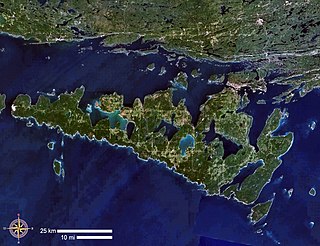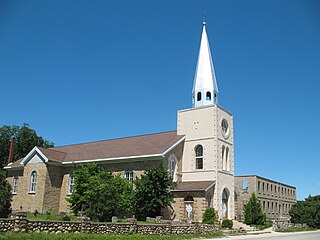Related Research Articles

Taiwanese indigenous peoples, also known as Native Taiwanese, Formosan peoples, Austronesian Taiwanese, Yuanzhumin or Gaoshan people, and formerly as Taiwanese aborigines, are the indigenous peoples of Taiwan, with the nationally recognized subgroups numbering about 569,000 or 2.38% of the island's population. This total is increased to more than 800,000 if the indigenous peoples of the plains in Taiwan are included, pending future official recognition. When including those of mixed ancestry, such a number is possibly more than a million. Academic research suggests that their ancestors have been living on Taiwan for approximately 6,500 years. A wide body of evidence suggests that the Taiwanese indigenous peoples had maintained regular trade networks with numerous regional cultures of Southeast Asia before the Han Chinese colonists began settling on the island from the 17th century, at the behest of the Dutch colonial administration and later by successive governments towards the 20th century.

Creole peoples are ethnic groups formed during the European colonial era, from the mass displacement of peoples brought into sustained contact with others from different linguistic and cultural backgrounds, who converged onto a colonial territory to which they had not previously belonged.

Manitoulin Island is an island in Lake Huron, located within the borders of the Canadian province of Ontario, in the bioregion known as Laurentia. With an area of 2,766 km2 (1,068 sq mi), it is the largest lake island in the world, large enough that it has over 100 lakes itself. In addition to the historic Anishinaabe and European settlement of the island, archaeological discoveries at Sheguiandah have demonstrated Paleo-Indian and Archaic cultures dating from 10,000 BC to 2,000 BC.

Mestizo is a person of mixed European and indigenous American ancestry in the Spanish Empire.In certain regions such as Latin America, it may also refer to people who are culturally European even though their ancestors are Native American. The term was used as an ethno-racial exonym for mixed-race castas that evolved during the Spanish Empire. It was a formal label for individuals in official documents, such as censuses, parish registers, Inquisition trials, and others. Priests and royal officials might have classified persons as mestizos, but individuals also used the term in self-identification.

A potlatch is a gift-giving feast practiced by Indigenous peoples of the Pacific Northwest Coast of Canada and the United States, among whom it is traditionally the primary governmental institution, legislative body, and economic system. This includes the Heiltsuk, Haida, Nuxalk, Tlingit, Makah, Tsimshian, Nuu-chah-nulth, Kwakwaka'wakw, and Coast Salish cultures. Potlatches are also a common feature of the peoples of the Interior and of the Subarctic adjoining the Northwest Coast, although mostly without the elaborate ritual and gift-giving economy of the coastal peoples.

Northeastern Manitoulin and the Islands is a municipality with town status in Manitoulin District in Northeastern Ontario, Canada, approximately 30 kilometres (19 mi) south of Espanola. Its main town is Little Current, located on the northeast side of Manitoulin Island. However, its territory also includes most of the small islands surrounding Manitoulin, even those at the far western end of Manitoulin.

Wampum is a traditional shell bead of the Eastern Woodlands tribes of Native Americans. It includes white shell beads hand-fashioned from the North Atlantic channeled whelk shell and white and purple beads made from the quahog or Western North Atlantic hard-shelled clam.

Zambo or Sambu is a racial term historically used in the Spanish Empire to refer to people of mixed Indigenous and African ancestry. Occasionally in the 21st century, the term is used in the Americas to refer to persons who are of mixed African and Indigenous American ancestry.

Ethnocide is the extermination of cultures.

The Wiikwemkoong First Nation is a First Nation on Manitoulin Island in Northern Ontario. The Wiikwemkoong Unceded Territory is the First Nation reserve in the northeast of Manitoulin Island in Manitoulin District, Ontario, Canada. Wiikwemkoong is an unceded Indigenous reserve in Canada, which means that it has not "relinquished title to its land to the government by treaty or otherwise."

M'Chigeeng First Nation, also known as West Bay, is an Ojibwe First Nation band government in the Manitoulin District of Ontario, Canada. The total registered population as of December 2018, was 2623 people, of which their on-reserve population was 939. The First Nation have reserved for themselves the 3094.7 ha M'Chigeeng 22 Indian Reserve located on Manitoulin Island.

Manitou, akin to the Haudenosaunee orenda, is the spiritual and fundamental life force among Algonquian groups in the Native American theology. It is omnipresent and manifests everywhere: organisms, the environment, events, etc. Aashaa monetoo means "good spirit," while otshee monetoo means "bad spirit." When the world was created, the Great Spirit, Aasha Monetoo, gave the land to the indigenous peoples, the Shawnee in particular.
Manitoulin Secondary School, is a secondary school located on M'Chigeeng First Nation, Ontario, on Manitoulin Island, and is approximately 2 hours from downtown Sudbury.

Mestiço is a Portuguese term that referred to persons born from a couple in which one was an aboriginal person and the other a European.
The term mixed-blood in the United States and Canada has historically been described as people of multiracial backgrounds, in particular mixed European and Native American ancestry. Today, the term is often seen as pejorative.

The Dinagyang Festival is a religious and cultural festival in Iloilo City, Philippines, held annually on the 4th Sunday of January, or right after the Sinulog in Cebu and the Ati-Atihan Festival in Kalibo, Aklan. As one of the largest festivals in the Philippines, it draws over a million domestic and international visitors each year.

Two-spirit is a modern, pan-Indian, umbrella term used by some Indigenous North Americans to describe Native people in their communities who fulfill a traditional third-gender ceremonial and social role in their cultures.

Holy Cross Church is a Roman Catholic Parish church in the Wiikwemkoong Unceded Reserve, north-eastern Manitoulin island. It was founded by the Society of Jesus (Jesuits) in 1844 and was their first mission in Northern Ontario since their suppression in 1767. The mission played a significant role in increasing literacy in Canada of the Ojibwe language. The church building itself was constructed in 1852. It is situated to the north of Wiikwemkoong on Wikwemikong Way, next to the Giizhigaanang Community Centre.
Jeannette Corbiere Lavell is a Canadian and Anishinaabe community worker who focused on women's and children's rights. In 2018, she was honoured as a member of the Order of Canada.

The Spanish Indian Residential Schools was a set of single-sex Canadian Indian residential schools for First Nations, Métis, and Anishinaabe children that operated in Spanish, Ontario from 1913 to 1965 by the Jesuit Fathers, the Daughters of the Heart of Mary, and the Government of Canada.
References
- ↑ Mike Strobel, "Island life is berry mellow", Toronto Sun , July 10, 2008.
- ↑ "Haweater Weekend". Archived from the original on 2010-07-19. Retrieved 2008-08-09.